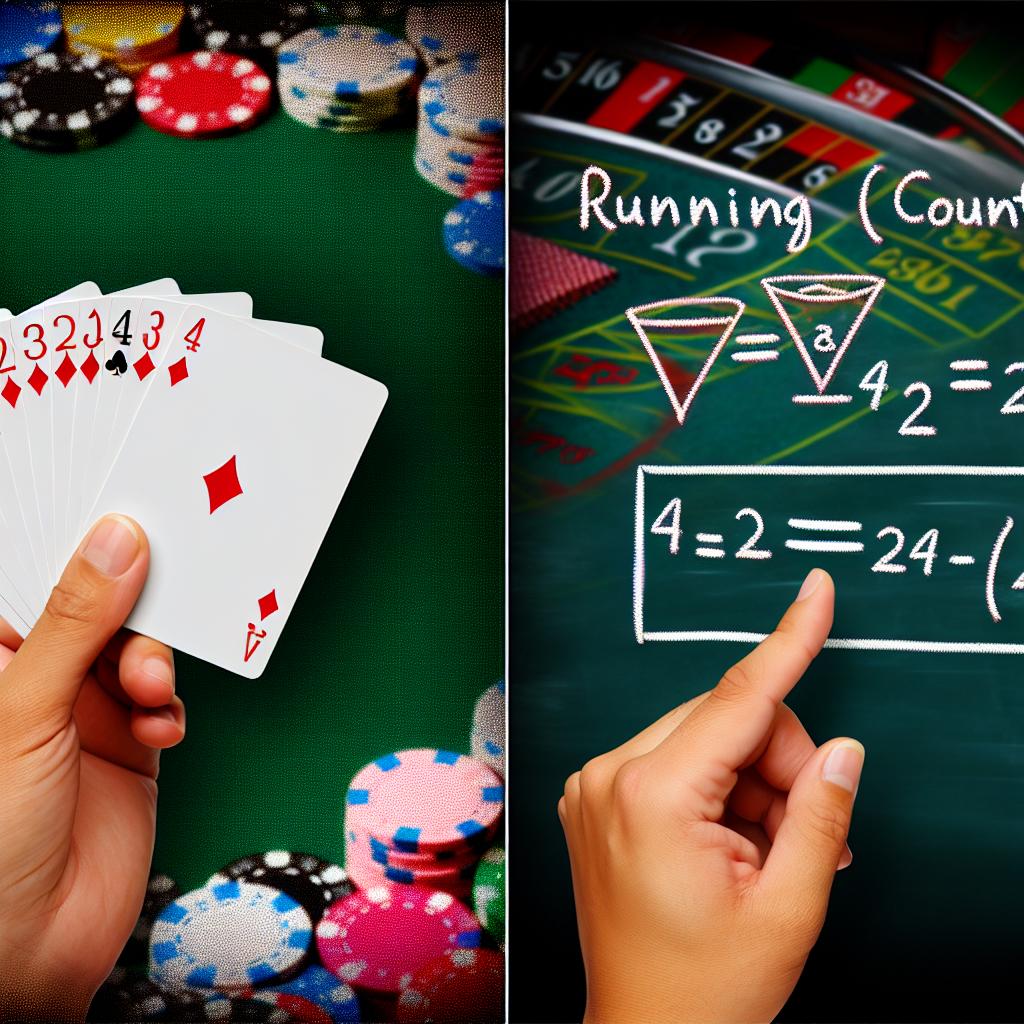Understanding Running Count in Blackjack
Blackjack is a game where strategy and observation can significantly influence the outcome. One of the most renowned strategies in this game is card counting, which has fascinated players and strategists alike for decades. At the core of card counting lies the concept of the running count, a pivotal strategy that allows players to estimate the likelihood of favorable cards being dealt.
The running count essentially involves systematically keeping track of high and low cards that are dealt during gameplay. By doing so, players can develop a predictive insight into the cards that are likely to appear next, giving them a potential strategic advantage over the dealer.
Basic Principles of Running Count
In the process of card counting, every card is assigned a specific value. This helps tally which cards have already been seen and which remain in the shoe. Cards with values ranging from 2 to 6 are typically considered low, and when dealt, they increase the running count by one. This is because low cards favor the dealer, allowing them an easier path to hitting a strong hand without busting.
Conversely, high cards, such as 10s, face cards, and Aces, when dealt, decrease the running count by one. High cards are advantageous for players, enabling stronger hands, better chances for a blackjack, and forcing the dealer into more challenging situations when they must hit on certain totals.
Cards valued between 7 and 9 are usually neutral, meaning their appearance does not affect the running count. Thus, their value is considered zero.
This simple technique of adding and subtracting based on the cards that appear helps players maintain a continuous tally—the running count. However, it is crucial to note that the running count alone does not adjust for the number of decks in play, a vital consideration in contemporary card games.
Transitioning from Running Count to True Count
The running count offers a rough estimate of the card distribution, but without incorporating the number of decks left in the shoe, it remains incomplete. The true count refines this estimation by accounting for the deck volume, providing a more reliable indicator for strategic decision-making.
Calculating the True Count
Step-by-Step Conversion
To transition from the running count to a true count requires the consideration of decks remaining in the shoe, a skill honed by experience and keen observation. Essentially, the process involves the division of the running count by the estimated number of decks that have yet to be dealt.
1. Estimate the Decks Remaining: This requires a blend of experience and observational skills. Observing the rate at which cards are dealt and the number of cards in discarded piles are crucial.
2. Convert the Running Count: Dividing the running count by the estimated decks remaining yields the true count—a refined measure that allows better forecasting of favorable outcomes.
To illustrate, consider a running count of +6, with an estimated 3 decks left in the shoe. Dividing 6 by 3 results in a true count of +2.
The True Count’s Significance
The true count is a strategic compass at the blackjack table, guiding players’ betting strategies. By providing insight into the likelihood of high or low cards appearing next, players can adjust their bet sizes accordingly. A high true count signifies a greater proportion of high cards remain, advantageous for the player, who can then raise bets. Conversely, a low or negative true count suggests a higher concentration of low cards, prompting more conservative play.
Effective Application of True Count in Play
Mastering the application of the true count requires practice and observant attention to detail. Successful implementation can lead to substantial impacts on overall winnings. When leveraging the true count, a player makes the transition from generic gameplay to a more calculated approach tailored by statistical inference. This adjustment enables strategic betting, enhancing the overall effectiveness of one’s blackjack strategy.
For players seeking to refine their skills further, numerous resources are available detailing the nuances of true count strategies and their application in real-world gameplay. Interested players can explore valuable guides and insights here, offering a deep dive into this strategic facet of blackjack.
In summary, the running count and true count form the backbone of card counting strategies in blackjack. By understanding these concepts and applying them effectively, players can gain a competitive edge. While not infallible, these strategies enhance decision-making and can significantly influence outcomes in a game often seen as one of chance and probability.

